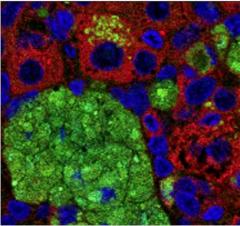You are here
WHAT IS INNATE IMMUNITY?
Immune Response: The Good, The Bad, The Controlled
The immune system protects the body from disease. Over the past decade, however, researchers have come to understand that the innate immune system — the part of the immune system that serves as the body’s first line of defense — is implicated in an enormous number of disease processes that affect many millions of people around the world.
Sometimes the immune system runs too hot, erroneously attacking the body. Sometimes, it runs too cold — its defenses insufficient to defend against invaders. We now know that the tipping point between running too hot or too cold often depends on the innate immune response, but we don’t know how to prevent it from going off course. The CIIID’s goal is to determine how to fine-tune the innate immune system (so that it knows exactly when to turn on and how to protect the body), and then how to turn it off before it causes any collateral damage.
The Two Halves of the Immune System
Manipulating immune function — enhancing it or suppressing it — will rest on our ability to control the two aspects of the immune system: innate immunity, mentioned above, and adaptive immunity.
The innate immune system: the first line of defense
The innate immune system is the first part of the body to detect invaders such as viruses, bacteria, parasites and toxins, or to sense wounds or trauma. Upon detection of these agents or events, the innate immune system activates cells to attack and destroy the outsider, or to initiate repair, while also informing and modulating the adaptive immune response that follows this first line of defense.
The adaptive immune system: the second, specific response
Adaptive immune cells are the second and specific line of defense, and they are called to action by the innate immune system. After recognizing the invader, the cells can multiply and combat it, leading to recovery from disease and protection against its return.
Harnessing the Innate Immune System
The idea of using the immune system to help the body fight disease has been in existence for some time; vaccines, which allow the body to remember disease-causing pathogens, provide an excellent example. There are many diseases, though, in which the desired outcome is not to enhance the immune system, but to suppress its unwanted effects. Lupus, rheumatoid arthritis and multiple sclerosis, for instance, are autoimmune diseases in which the immune system erroneously attacks the body. Chronic inflammation, connected with wound trauma, diabetes, cardiovascular disease and neurodegenerative disease, is another example of immune-system overreaction. The idea of using innate immunity to either enhance or suppress overall immunity is a new avenue by which we can have profound impact on improving human health.
In striving to understand the innate immune system, the CIIID’s ultimate goal is to regulate overall immune response to distinct disease processes, thus using the power of immunity to improve human health. In doing so, we will improve the body’s ability to fight pathogens and to control the immune response when it goes off track — and we will change medicine forever.


